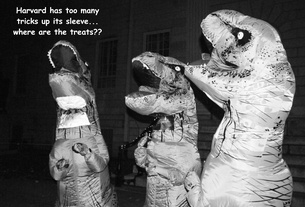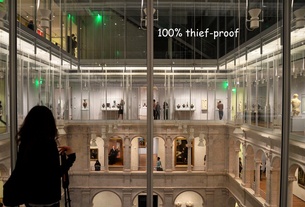{shortcode-41699c2528fc4124717802884e27f12ef12a2a50}
Donors have responded positively to these priorities throughout the quiet phase and first year of the campaign, public records show. Gifts have included a combined $250 million donation for the Wyss Institute for Biologically Inspired Engineering, a $40 million gift to be allocated for teaching and learning initiatives across the University, and an $80 million contribution for Harvard’s first-ever campus center—a stark contrast to the amounts raised during Rudenstine’s tenure.
Rice University President David W. Leebron ’76 said that the One Harvard mission resonated with him as a donor because he thinks that contemporary global issues call for interdisciplinary collaboration.
“What often sets apart somebody who is quite extraordinary is their ability to...look at problems from more than one perspective,” Leebron said, citing public health and climate change as examples.
“There is continuing and active effort to try and encourage joint gifts to donors who have interests that could be fulfilled by more than one school,” said Sidney R. Knafel ’52, a longtime donor who co-chairs the campaign for the Radcliffe Institute. “That will have a lasting impact on Harvard as an institution.”
LESS OF A TUB, MORE OF A POOL
In addition to funding inter-school initiatives, donors have also displayed support for the One Harvard vision by contributing to campaigns at different schools, regardless of degree affiliation.
According to Faust, alumni increasingly believe that invigorating parts of the University can strengthen Harvard as a whole, with many beginning to identify themselves “as citizens of the whole university, not just their school.”
For example, College and Business School alumni are directing campaigns at schools such as the Graduate School of Education, the Graduate School of Design, and the Divinity School that typically do not have alumni with the same level of financial means.
John K. F. Irving ’83, did not attend the Graduate School of Design but donated $10 million to the school last year and will co-chair its campaign. Irving, who said design has always piqued his interest, said that bolstering individual schools is essential to creating a “great university.”
“Every tub on its own bottom didn’t necessarily get all of the schools to the level that they should be at from a resources, profiling, or even a funding, or strategic point of view,” he said.
Similarly, although he attended the College and Business School, Knafel chairs the $70 million Radcliffe fundraising drive. The campaign is more than halfway to its goal, a fact that Knafel attributes to support from affiliates of other schools, such as FAS and the Business School.
“Radcliffe is dependent on One Harvard,” he said.
Rogers said her office has encouraged University supporters to work for campaigns at these schools—which she says present “a challenge for philanthropy”—to increase donors’ “exposure to the breadth of Harvard” and help them invest in passions that may align with particular schools.
Faust echoed this sentiment, saying that she and Business School Dean Nitin Nohria have discussed the ways in which Business School alumni, who form a relatively rich donor pool, could donate to various other schools.


